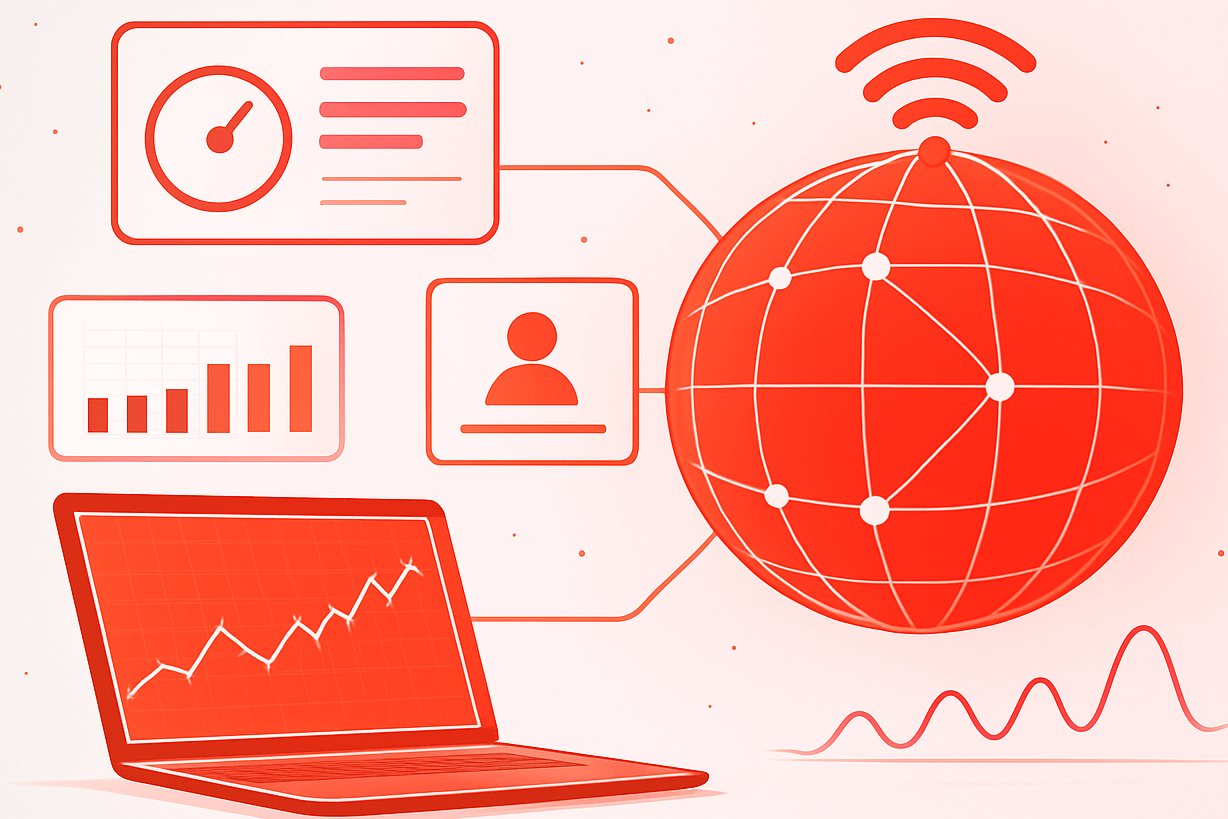21 October 2025
The Role of Network Monitoring in Driving Business Growth in the Digital Era
In today’s rapidly evolving digital era, networks have become one of the main backbones of business continuity. Almost every operational activity—from internal communication and customer service to financial transactions—depends on network stability and security.
In this context, network monitoring plays a crucial role in ensuring that business performance remains optimal, efficient, and secure.
Why Is Network Monitoring Important?
Digital transformation has made companies no longer reliant on manual systems. Nearly all processes are now connected through digital infrastructure such as servers, cloud-based applications, and IoT devices. This shift demands 24/7 service availability with minimal disruption.
Network monitoring serves as a solution to observe, analyze, and identify network issues before they escalate into major problems. Without proper monitoring, minor disruptions can grow into serious incidents such as downtime, data loss, or financial damage.
Key Benefits of Network Monitoring for Businesses
1. Enhancing System Reliability
Through real-time monitoring, companies can immediately detect issues affecting servers, routers, or applications. This allows IT teams to respond quickly, ensuring that operations continue to run smoothly.
2. Optimizing Operational Performance
Network monitoring helps analyze data traffic and bandwidth usage. These insights are essential for managing network priorities, preventing bottlenecks, and maintaining optimal access for critical business applications.
3. Strengthening Data Security
Cyberattacks often exploit vulnerabilities in networks. With continuous monitoring, suspicious activities such as abnormal traffic patterns can be detected early. This helps prevent data breaches and maintain customer trust.
4. Reducing Operational Costs
Unexpected downtime can cause significant losses—in both revenue and reputation. Effective network monitoring reduces the need for emergency repairs by identifying and resolving issues before they spread.
5. Supporting Business Scalability
As a business grows, so does its network demand. Network monitoring provides historical data and usage trends, enabling companies to plan infrastructure capacity accurately and avoid unnecessary spending.
Network Monitoring as a Driver of Digital Transformation
Digital transformation is not just about adopting new technologies—it’s about ensuring those technologies operate seamlessly. Network monitoring enables businesses to remain agile, maintain business continuity, and enhance customer experience in the face of rapid digital change.
For example, an e-commerce company experiencing a surge in traffic during a major promotion relies on monitoring systems to ensure its servers remain stable. Similarly, financial institutions use monitoring to safeguard real-time customer transactions. Without network monitoring, both industries would face significant operational and financial risks.
Network monitoring is no longer merely a technical tool—it has become a strategic business asset. With the ability to detect, prevent, and optimize network performance, companies can ensure that their digital transformation efforts run smoothly and deliver tangible value to customers.
In a fast-paced digital world, businesses that manage their networks intelligently will stand out in the competition. Therefore, investing in network monitoring should be viewed as a fundamental necessity, not an optional add-on.
Type content story here in English..
Is this information helpful?
